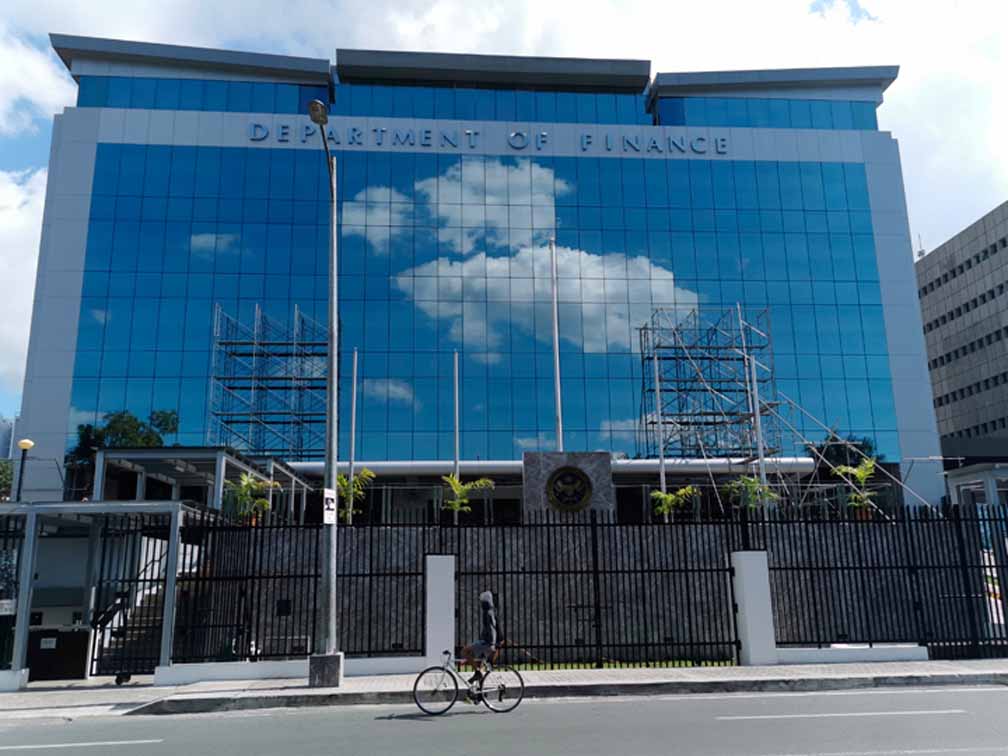
THE Department of Finance expects the country’s economic growth in the third quarter to be lower than that of the previous quarter due to the reimposition of lockdowns to curb the surge in Covid-19 cases.
Despite this, Finance Secretary Carlos G. Dominguez III on Thursday expressed confidence that the government can meet its downscaled economic growth target of 4 to 5 percent this year as the Philippine economy is expected to start opening up this fourth quarter.
Economist-lawmaker Joey Salceda of Albay agreed that the target GDP growth rate for this year is still attainable, but only if aggressive catch-up efforts in lagging regions are undertaken.
Salceda, who co-chairs the House Committee on Economic Stimulus and Recovery Cluster, said the benefits from high vaccination rates in Metro Manila, for instance, will be negated by the dismal coverage in some regions.
“Actually our second-quarter GDP, it grew by over 11 percent. We expect, in the third quarter, to be lower than that because of the spike in the [Covid-19] Delta variant. However, we’ve seen our cases dropped, and we’re beginning to open up our economy,” Dominguez said in an interview with Bloomberg TV.
The Philippine economy grew by 11.8 percent in the second quarter this year, the highest since the fourth quarter of 1988 when the economy grew 12 percent. The Philippine Statistics Authority earlier said the country’s GDP growth averaged 3.7 percent in the first semester, using constant 2018 prices.
Besides sticking to the country’s growth target, Dominguez also believes there is no need to change their full-year inflation target of 2 to 4 percent as long as fuel prices stay below $90 per barrel.
In terms of financing, Dominguez said they are still eyeing another offshore bond offering this year. This comes after the government’s maiden issuance of $1.593-billion Retail Onshore Dollar Bonds.
So far this year, the government has already issued dollar bonds, euro bonds and yen-denominated samurai bonds, but has yet to issue renminbi-denominated Panda bonds.
Sought to clarify if they are planning to issue Panda Bonds, Dominguez told reporters: “All options are open as we evaluate the alternatives against longer tenors, lower cost and less exchange rate risk.”
While the country aims to borrow P3.1 trillion this year, the finance chief reiterated that its posting a 60-percent debt-to-GDP ratio is “manageable,” as it is poised to bounce back once the mobility restrictions are lifted.
On top of this, Dominguez said foreign remittances from January to July have also increased 6 percent year-on-year to reach over $17 billion.
“So we’re very confident that we will emerge from this pandemic in a very good shape,” he said.
Regions must catch up–Salceda
“Manila is on the road to being okay. The regions are still not. We can’t do this without aggressive catchup efforts on the part of the national government, especially on vaccine arrivals,” said Salceda.
“It’s [meeting GDP goals] possible. But I disagree that only reopenings in key regions like NCR will be the necessary step,” he added.
According to Salceda, the government needs more vaccinations in lagging regions like the Bangsamoro Autonomous Region in Muslim Mindanao (BARMM) and Bicol.
“In Bicol, we are just still at 10-percent vaccination rate,” Salceda noted.
Salceda, also the chairman of the House Committee on Ways and Means, said the differences in Covid-19 situations among region is causing the transport bottlenecks.
“The challenge really is two-pronged. One is demand, and the other is inflation. Both can be solved by vaccinations in areas where supply and demand bottlenecks exist, like Bicol. So, you make the situation similar through vaccine equity,” Salceda explained.
“We are at a bit of a cliff here when it comes to inflation. You stimulate demand in NCR without fixing the interregional supply issues through vaccine equity, and you will see high inflation, especially in transport and food. So, while you might see high nominal growth, your real growth is in trouble. You have to do both demand stimulus and vaccine equity. There is no way around it,” Salceda added.
As what was done to solve the economic crises of 1997, 2004, and 2008, the senior lawmaker suggested to economic managers to keep the policy rates pro-growth, increase food supply and food mobility so we can efficiently allocate, and vaccinate in the regions, which are aching for new arrivals.
“The simple fact of the matter is that we get our food from the provinces. If they’re still not out of the woods with Covid-19, you are going to have problems, no matter how high the vaccination rate is in NCR,” Salceda explained.
On his inflation projections for 2022, it is still possible to stay at 4 percent or below, but Salceda thinks “that depends on whether we see the usual super typhoon in October and November, and whether fuel costs in the world market continue to increase. Both are outside our control. But vaccine equity and food mobility is within our control.”
Earlier, the International Monetary Fund (IMF) cut its growth forecast for the Philippines this year to below the government’s lower target.
In the latest issue of the World Economic Outlook (WEO), the IMF now forecasts the Philippines to grow by 3.2 percent for 2021—down from the 5.4-percent forecast of the country’s gross domestic product (GDP) growth in July.

